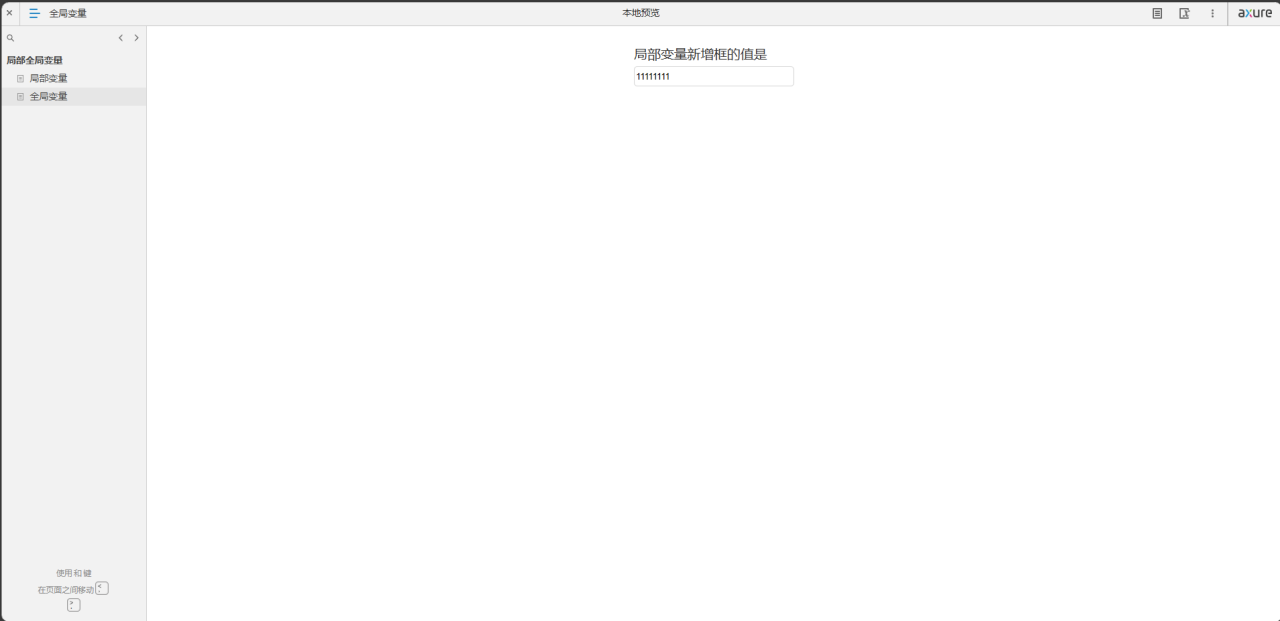1.C语言中的字符串
C语言中,字符串是以'\0'结尾的一些字符的集合,为了操作方便,C标准库中提供了一些str系列的库函数,但是这些库函数与字符串是分离开的,不太符合OOP的思想,而且底层空间需要用户自己管理,稍不留神可能还会越界访问。
在OJ中,有关字符串的题目基本以string类的形式出现,而且在常规工作中,为了简单、方便、快捷,基本都使用string类,很少有人去使用C库中的字符串操作函数。
2. 标准库中string类的常见接口
(1) 简介
在使用string类时,必须包含#include头文件以及using namespace std;

字符串是表示字符序列(顺序表)的对象
(2) 成员函数
● string类对象的常见构造

● 析构函数。
当字符串生命周期结束,会自动调用析构函数。

int main()
{string s1;//构造空的string类对象s1string s2("123");//带参构造,用C格式字符串构造string类对象s2string s3(s2);//拷贝构造string s4(s2, 2, 3);//从下标为2的位置拷贝是3个字符string s5(s2, 2, 10);//超出拷贝字符串的范围,拷贝到原字符串结尾就结束string s6("123456", 4);//复制前4个string s7( 10 ,'x');//用10个'x'填充字符串(初始化)return 0;
}● 赋值重载

(3) 迭代器
<1> 正向迭代器Iterator
提供了一种通用的(所用)访问容器的方式,比如访问字符串,链表等
//iterator类似于指针
string::iterator it = s1.begin();//begin返回开始位置的迭代器
while (it != s1.end())//end返回最后一个有效字符的下一个位置的迭代器
{it += 2;//可以修改cout << *it << " ";++it;
}
cout << endl; ● begin

● end

<2> 反向迭代器reverse_iterator
string s1("1234");
string::reverse_iterator rit = s1.rbegin();//返回反向迭代器以反向开始
while (rit != s1.rend())//将反向迭代器返回到反向端
{rit += 2;//可以修改cout << *rit << " ";++rit;
}
cout << endl;
return 0;● rbegin

● rend

<3> 迭代器访问const类型容器
普通的迭代器是可读可写的,const迭代器访问const修饰的容器只能读不能写(指向的内容)
注意const迭代迭代器不是指const修饰迭代器,因为迭代器本身可以修改,而它指向的内容不能修改!
const string s2("1234");
string::const_iterator cit = s2.begin();//const迭代器
while (cit != s2.end())//只能读不能写(指向的内容)
{cout << *cit << " ";++cit;
}
cout << endl;const string s3("1234");
string::const_reverse_iterator rit = s3.rbegin();//const迭代器
while (rit != s3.rend())//只能读不能写(指向的内容)
{cout << *rit << " ";++rit;
}
cout << endl;(3) string类对象的常见容量操作

● string容量相关方法使用(扩容):
std::string 的内部实现可能使用了一些优化技术,比如小字符串优化(SSO),在这种情况下,短字符串可能直接存储在 std::string 对象的内存空间内,而不是在堆上分配。但是,当字符串增长超出了这个内部空间时,就会触发堆上的内存分配和扩容。
当std::string对象通过连续的push_back操作增加元素时,其容量会根据元素数量增长,初始容量可能是15个字节,并且当size达到capacity时,容量会增加,通常是以一定的增量增长,如16个字节。在某些实现中,如果当前容量小于32,新的容量可能增加16;如果当前容量大于或等于32,新的容量可能是当前容量的1.5倍或者直接翻倍,以减少将来可能的内存重新分配次数,提高性能 。(了解)
void TestPushBack()
{string s;size_t sz = s.capacity();cout << "making s grow:\n";for (int i = 0; i < 100; ++i){s.push_back('c');if (sz != s.capacity())//扩容{sz = s.capacity();cout << "capacity changed: " << sz << '\n';}}
}
容量只显示有效字符的个数,内存会比容量多一个空间(存储‘ \0 ’)

● 注意:
1. size()与length()方法底层实现原理完全相同,引入size()的原因是为了与其他容器的接口保持一致, 一般情况下基本都是用size() 。
2. clear()只是将string中有效字符清空,不改变底层空间大小。
3. resize(size_t n) 与 resize(size_t n, char c)都是 将字符串中有效字符个数改变到n个 ,不同的是当字符个数增多时:resize(n)用0来填充多出的元素空间,resize(size_t n, charc) 用字符c来填充多出的元素空间 。注意: resize在改变元素个数时,如果是将元素个数增多,可能会改变底层容量的大小,如果是将元素个数减少,底层空间总大小不变。
4. reserve(size_t res_arg=0):为string预留空间,不改变有效元素个数,当reserve的参数小于string的底层空间总大小时,reserver不会改变容量大小。vs下,有效元素个数小于预留空间大小时,不缩容。reserve扩容://预留100的容量,但会发生内存对齐,所以最终预留容量会大于100 s.reserve(100);
(4) 元素访问
● 运算符重载[ ]

底层模拟实现:
char& operator[](size_t pos)
{assert(pos < size);//越界会报错return _str[pos];
}返回的是引用,方便我们进行读和修改的操作:
string s1("hello world");
cout << s1 << endl;
s1[0] = 'd';
cout << s1 << endl;
//下标 + []
for (size_t i = 0; i < s1.size(); i++)
{cout << s1[i] << " ";
}
cout << endl;● at 获取字符串中的字符
返回对字符串中位置 pos 处的字符的引用。

该函数自动检查 pos 是否是字符串中字符的有效位置(即 pos 是否小于字符串长度),如果不是,则抛出 out_of_range 异常。
// string::at
#include <iostream>
#include <string>int main ()
{std::string str ("Test string");for (unsigned i=0; i<str.length(); ++i){std::cout << str.at(i);}return 0;
}(5) 修改器
● push_back

string s1("hello world");
cout << s1 << endl;
s1.push_back('1');
cout << s1 << endl << endl;● append

string s2;
s2.append(s1);
cout << s2 << endl; ● 赋值重载+=
s1 += "234";
cout << s1 << endl;● insert(插入)

s2.insert(0, "123");
cout << s2 << endl;● erase(删除)

string s3("hello world");
s3.erase(0,1);//头删
cout << s3 << endl;
s3.erase(6);//6位置之后的全部删除
cout << s3 << endl;● replace(替换)

string s4("hello world");
s4.replace(5, 1, "00");
//将从第五个位置开始的一个字符替换成"00"
cout << s4 << endl;replace替换有很多的风险,少替换多时,会有字符挪动,可能会有多次扩容, 导致效率低下。在替换个数相同时,可以使用。
(6) 字符串修改
● c_str(兼容C)

string file;
cin >> file;//输入当前文件,例如Test.cpp
FILE* fout = fopen(file.c_str(), "r");//传指向文件底层的指针
char ch = fgetc(fout);//读取文件的字符串
while (ch != EOF)
{cout << ch;ch = fgetc(fout);
}
fclose(fout);● data(类似于c_str)

● substr(子串)

返回一个新构造的字符串对象,其值初始化为从pos位置开始,长度为len(或直到字符串末尾,以先到者为准)的原字符串的拷贝
string s1("test.cpp");size_t pos = s1.find(".");//返回找到的第一个.string subfix = s1.substr(pos);//取后缀,从pos位置开始取子字符串● find(正向)

将所有“ ”替换成“%%” :
// 将所有“ ”替换成“%%”
void test1()
{string s1("hello world");cout << s1 << endl;size_t pos = s1.find(" ");//效率较低while (pos != string::npos){s1.replace(pos, 1, "%%");//将一个空格替换成%%(少替换多)pos = s1.find(" ",pos+2);//从pos+2的位置开始向后找}cout << s1 << endl;string tmp;//定义新的string类型,避免多次字符串多次移动,效率低下的问题for (auto ch : s1){if (ch == ' ')tmp += "%%";elsetmp += ch;}cout << tmp << endl;//s1 = tmp;//将结果直接赋值给s1s1.swap(tmp);//直接交换,tmp构造的空间直接交换给s1(更高效)cout << s1 << endl;
} ● rfind(倒着找)
 题目:找出文件的后缀名
题目:找出文件的后缀名
// 题目:找出文件的后缀名string s1("test.cpp");size_t pos = s1.find(".");//返回找到的第一个.string subfix = s1.substr(pos);//取后缀,从pos位置开始取子字符串cout << subfix << endl;//这次要求返回的是.zipstring s2("test.cpp.zip");size_t rpos = s2.rfind(".");string rsubfix = s2.substr(rpos);//取后缀,从pos位置开始取子字符串cout << rsubfix << endl;● find_first_of
在字符串中搜索与其参数中指定的任何字符匹配的第一个字符。

string str("Please, replace the vowels in this sentence by asterisks.");size_t found = str.find_first_of("aeiou");//在str中找到"aeiou"的任意一个都会返回下标while (found != string::npos){str[found] = '*';found = str.find_first_of("aeiou", found + 1);}cout << str << '\n';● find_last_of(倒着找)
在字符串中搜索与参数中指定的任何字符匹配的最后一个字符。

// 将路径和文件分隔开
//将路径和文件分隔开
void SplitFilename(const string& str)
{cout << "Splitting: " << str << '\n';size_t found = str.find_last_of("/\\");//无论包含包含的是linu下的分割还是Windows下的分割都进行下标返回cout << " path: " << str.substr(0, found) << '\n';cout << " file: " << str.substr(found + 1) << '\n';
}
int main()
{string str1("/usr/bin/man");//Linux下的分隔符是/string str2("c:\\windows\\winhelp.exe");//Windows下的分隔符是\,Windows下显示写\要写两个\\SplitFilename(str1);SplitFilename(str2);return 0;
}
● find_first_not_of
查找字符串中与参数中指定的任何字符都不匹配的第一个字符
● find_last_not_of
在字符串中搜索与参数中指定的任何字符都不匹配的最后一个字符
(7)成员常数npos

npos是一个静态成员常量值,对于size-t类型的元素,它是size_t的最大值。
(8)非成员函数
● 运算符重载+
返回一个新构造的字符串对象,其值是lhs中字符的连接,后跟rhs中的字符。

运算符重载要求至少有一个是类类型的参数
void test5()
{ string s1("hello");string s2 = s1 + "world";string s3 = "world" + s1;cout << s1 << endl;cout << s2 << endl;cout << s3 << endl;
}● 比较运算符重载
在字符串对象lhs和rhs之间执行适当的比较操作

● getline(将线从流转换为字符串)
从is中提取字符并将其存储到str中,直到找到分隔符delim(或换行符'\n',用于(2))

字符串最后一个单词的长度_牛客题霸_牛客网
#include <iostream>
using namespace std;int main() {string str;//cin >> str;// cin 和 scanf 将空格和换行默认成分割getline(cin,str);// 无定界默认遇到换行才停止输入size_t pos = str.rfind(' ');cout << str.size() - (pos + 1) << endl;
}eg:
getline(cin,str,"*");//流提取,直到遇到*才停止3. auto和范围for
(1) auto关键字
● 在早期C/C++ 中 auto 的含义是:使用 auto 修饰的变量,是具有自动存储器的局部变量,后来这个 不重要了。 C++11 中,标准委员会变废为宝赋予了 auto 全新的含义即: auto 不再是一个存储类型 指示符,而是作为一个新的类型指示符来指示编译器, auto声明的变量必须由编译器在编译时期推导而得。● 用auto 声明指针类型时,用 auto 和 auto*(必须是指针) 没有任何区别,但用 auto 声明引用类型时则必须加 & 当在同一行声明多个变量时,这些变量必须是相同的类型,否则编译器将会报错,因为编译器实际 只对第一个类型进行推导,然后用推导出来的类型定义其他变量 。● auto 不能作为函数的参数,可以做返回值 ,但是建议谨慎使用● auto 不能直接用来声明数组
#include<iostream>
#include <string>
#include <map>
using namespace std;
int main()
{
std::map<std::string, std::string> dict = { { "apple", "苹果" },{ "orange",
"橙子" }, {"pear","梨"} };
// auto的用武之地
//std::map<std::string, std::string>::iterator it = dict.begin();
auto it = dict.begin();
while (it != dict.end())
{
cout << it->first << ":" << it->second << endl;
++it;
}#include<iostream>
using namespace std;
int func1()
{
return 10;
}
// 不能做参数
void func2(auto a)
{}
// 可以做返回值,但是建议谨慎使用
auto func3()
{
return 3;
}
int main()
{
int a = 10;
auto b = a;
auto c = 'a';
auto d = func1();
// 编译报错:rror C3531: “e”: 类型包含“auto”的符号必须具有初始值设定项
auto e;//无法从右边的类型推出auto的类型
cout << typeid(b).name() << endl;//打印类型
cout << typeid(c).name() << endl;
cout << typeid(d).name() << endl;
int x = 10;
auto y = &x;
auto* z = &x;
auto& m = x;
cout << typeid(x).name() << endl;
cout << typeid(y).name() << endl;
cout << typeid(z).name() << endl;
auto aa = 1, bb = 2;
// 编译报错:error C3538: 在声明符列表中,“auto”必须始终推导为同一类型
auto cc = 3, dd = 4.0;
// 编译报错:error C3318: “auto []”: 数组不能具有其中包含“auto”的元素类型
auto array[] = { 4, 5, 6 };
return 0;
}(2) 范围for
● 对于一个 有范围的集合 而言,由程序员来说明循环的范围是多余的,有时候还会容易犯错误。因此C++11中引入了基于范围的for循环。 for循环后的括号由冒号“ :”分为两部分:第一部分是范围内用于迭代的变量(每个字符的拷贝),第二部分则表示被迭代的范围, 自动迭代,自动取数据,自动判断结束。● 范围for可以作用到 数组和容器对象 上进行遍历● 范围for的底层很简单,容器遍历实际就是 替换为迭代器 ,这个从汇编层也可以看到。
//自动赋值,自动迭代,自动判断结束
//底层就是迭代器
// C++11的遍历
for (auto& e : array)
e *= 2;
for (auto e : array)
cout << e << " " << endl;for (auto ch : s1)
{ch -= 2;//这里修改的只是字符串的拷贝ch(ch是局部变量)cout << ch << " ";
}
cout << endl;for (auto& ch : s1)//ch就是s1里每个字符的别名
{ch -= 2;//修改了s1字符串cout << ch << " ";
}
cout << endl;4.string类的常用接口说明
(1) string类对象的遍历访问操作

(2) string类对象的修改操作

1. 在string尾部追加字符时, s.push_back(c) / s.append(1, c) / s += 'c'三种的实现方式差不多 ,一般情况下string类的+=操作用的比较多, +=操作不仅可以连接单个字符,还可以连接字符串 。2. 对string操作时,如果能够大概预估到放多少字符,可以先通过 reserve 把空间预留好。



















